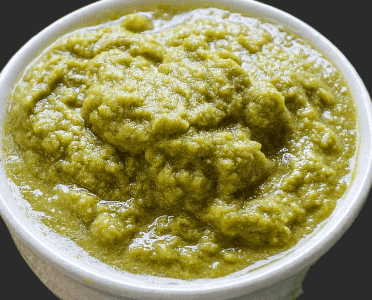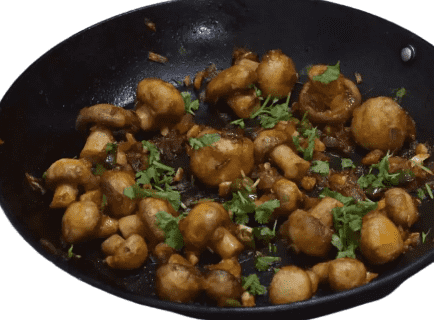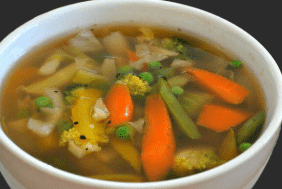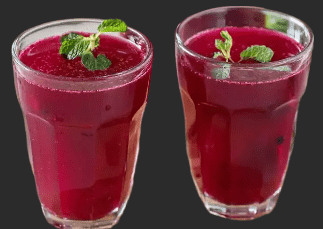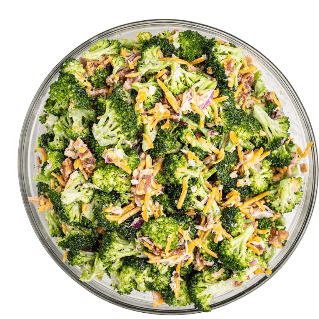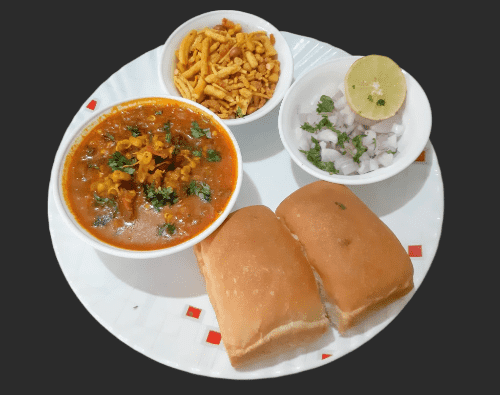Best Jowar Upma
Introduction:
Why Jowar Upma is the Next Big Thing in Healthy Eating In a world where healthy eating is becoming a priority for many, ancient grains like jowar (sorghum) are making a powerful comeback. Jowar, a gluten-free grain, is packed with nutrients and is often used as a replacement for wheat, rice, and other refined grains. One of the most delightful ways to enjoy this superfood is in the form of Jowar Upma, a savory dish that’s perfect for breakfast or even a light dinner.
In this post, we’ll take a deep dive into the world of Jowar Upma, exploring not just how to make it, but also its health benefits, the versatility it offers, and how you can tweak the recipe to suit your taste and nutritional goals. Whether you’re already familiar with upma or are looking to try a new version, this recipe promises to add a new favorite to your healthy meal repertoire.
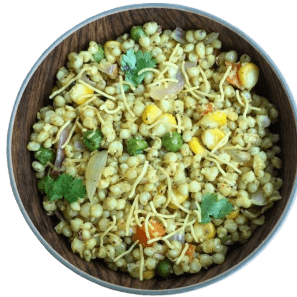
The History and Cultural Significance of Jowar
Jowar: An Ancient Grain with a Modern Twist
Jowar, also known as sorghum, has been cultivated for over 4,000 years and is native to Africa, though it has since spread to India, China, and other parts of the world. It has been a staple grain for many communities, especially in arid regions, due to its drought-resistant nature.
Discuss the cultural significance of jowar in Indian households, particularly in rural parts of Maharashtra, Karnataka, and Telangana, where it is a common part of the diet.
Jowar in ancient Ayurveda: How it was revered for its health-promoting qualities like promoting digestion, providing energy, and being gluten-free.
Upma: A South Indian Comfort Food
A brief history of upma, a traditional South Indian breakfast dish typically made from semolina (rava) but now reinvented with various grains like millet, oats, quinoa, and jowar.
The evolution of upma to include gluten-free and healthier alternatives like jowar upma, which has gained popularity due to the rising interest in whole grains.
Nutritional Benefits of Jowar
Jowar isn’t just another grain—it’s a powerhouse of nutrients that provides numerous health benefits. Here’s why you should consider incorporating jowar into your diet:
- Gluten-Free: Jowar is naturally gluten-free, making it a perfect option for people with gluten intolerance or celiac disease.
- Why going gluten-free is becoming more common: A discussion on gluten sensitivity and the benefits of avoiding gluten-rich grains.
- Rich in Fiber: Jowar contains a high amount of dietary fiber, which helps in maintaining digestive health and aids in weight management by keeping you full for longer periods.
- How fiber in jowar helps prevent overeating and supports a healthy gut.
- High in Protein: Jowar provides a decent amount of plant-based protein, making it ideal for vegetarians and vegans.
- The role of protein in muscle repair, energy, and overall health, especially for those following plant-based diets.
Packed with Essential Nutrients:
- Vitamins: Jowar is rich in B-vitamins, particularly niacin (B3), which helps convert food into energy, and riboflavin (B2), which is vital for skin and eye health.
- Minerals: It contains significant amounts of iron, calcium, phosphorus, potassium, and magnesium. These minerals contribute to bone health, improve circulation, and help in the regulation of blood pressure.
- Antioxidants: Jowar contains tannins and anthocyanins, which have antioxidant properties that help reduce inflammation and fight free radical damage.
- Low Glycemic Index (GI): Jowar has a low glycemic index, meaning it releases sugar slowly into the bloodstream, making it an excellent option for people with diabetes or anyone trying to maintain stable blood sugar levels.
- Aids in Heart Health: The magnesium and potassium found in jowar help in maintaining a healthy heart by regulating blood pressure levels.
Ingredients Breakdown for Jowar Upma
The ingredients in jowar upma can be both simple and flexible, making it a customizable dish for different tastes and dietary needs. Let’s break down each component and understand their significance:
Jowar Rava (Sorghum Grits):
Discuss the process of preparing jowar rava, which involves cleaning, drying, and coarsely grinding jowar grains.
Alternatives to jowar rava: You can use whole jowar or jowar flour to create variations of the dish.
Vegetables:
- Onions: Adds a savory sweetness and depth to the dish.
- Tomatoes: For acidity and a tangy balance to the flavors.
- Green chilies: For heat—adjust to your spice tolerance.
- Carrots, peas, beans, bell peppers: Adds crunch, color, and nutrients. The choice of vegetables can vary according to seasonality.
- Ginger: Adds warmth and helps in digestion.
Tempering Spices:
- Mustard seeds: Adds pungency and is essential in traditional South Indian tempering.
- Cumin seeds: Earthy and warm, helping in balancing the flavors.
- Hing (asafoetida): Enhances the umami taste of the upma while aiding digestion.
- Curry leaves: Imparts a distinct flavor and aroma typical of South Indian cuisine.
- Turmeric: Not only for its golden hue but also for its anti-inflammatory properties.
Lentils:
- Urad dal (split black gram) and chana dal (split Bengal gram): These dals are commonly used in the tempering for added crunch and protein.
Water or Broth:
- Use water or vegetable broth to cook the jowar rava. Broth adds a richer flavor to the upma.
Garnishes:
- Coriander leaves: For freshness.
- Grated coconut: A traditional garnish that adds a touch of sweetness.
- Lemon juice: For brightness and a burst of tang.
Oil or Ghee:
- Traditional upma is cooked with ghee (clarified butter) for richness, but for a vegan version, you can use coconut oil, sesame oil, or sunflower oil.
Step-by-Step Recipe for Jowar Upma
Now, let’s get into the detailed steps of making this healthy and delicious Jowar Upma. By following these instructions, you’ll create a light, fluffy, and flavorful dish that’s perfect for breakfast, brunch, or even a light dinner.
Preparing the Jowar Rava
- Discuss the process of cleaning and roasting the jowar rava (or grits) lightly in a pan to bring out its nutty flavor.
- Why roasting is essential: It helps enhance the flavor and prevents the rava from becoming mushy when cooked.
Tempering the Spices
- Heat oil painting or ghee in a visage, also add mustard seeds, cumin seeds, hing, and curry leaves.
- Fry the dals( urad dal and chana dal) until they turn golden and crisp.
- Add green chilies, gusto, and onions, and sauté until the onions turn translucent.
Adding Vegetables
- Add diced vegetables like carrots, peas, sap, and tomatoes. Sauté for a many twinkles until they soften slightly but still retain a bite.
- Optionally, you can cover the visage and cook the vegetables for 5- 7 twinkles on low heat to insure they’re tender.
Cooking the Jowar Rava
- Add the roasted jowar rava to the visage and mix well to fleece it with the spices and vegetables.
- Add water or broth( generally a 12 rate of jowar rava to liquid) and stir.
- Season with swab and bring the admixture to a pustule.
Stewing and fumbling
- Once the liquid starts boiling, reduce the heat, cover the visage, and let the upma poach for 10- 12 twinkles until the water is absorbed and the jowar rava is cooked.
- Stir sometimes to insure it does n’t stick to the bottom of the visage.
- When done, fluff the upma with a chopstick to separate the grains.
Garnishing and Serving
- Add diced coriander leaves, grated coconut, and a squeeze of bomb juice before serving.
- Serve hot with a side of chutney or curd.
Variations of Jowar Upma
One of the stylish effects about Jowar Upma is its versatility. Then are some succulent variations to try.
- Jowar Vegetable Upma Increase the quantum of vegetables to make the dish heartier and further nutritional.
- racy Jowar Upma Add further green chilies or a sprinkle of red chili greasepaint to give your upma an redundant kick.
- Jowar and Millet Upma Combine jowar rava with other millets like foxtail millet or bajra for amulti-grain upma.
- Coconut Jowar Upma Add fresh grated coconut directly into the upma while cooking for a sweeter and richer taste.
- Lemon Jowar Upma Add bomb juice while cooking for a pungent twist on the traditional form.
Health Benefits of Incorporating Jowar in Your Diet
As bandied before, jowar is rich in fiber, protein, and essential nutrients. This section can further unfold on:
- How regularly consuming jowar upma helps in weight operation.
- The benefits of jowar for perfecting heart health and managing diabetes.
- Why jowar is a great addition to the diet for those who are looking for gluten-free options without compromising on taste or nutrition.
Cultural Relevance and Modern Day Twist
In this section, we can talk about how jowar upma blends tradition with ultramodern healthy eating trends. bandy how sludge( jowar) was a chief in the diets of pastoral communities and how it’s being rediscovered by civic health-conscious individualities moment. This part can also touch on how traditional dishes like upma are being reinvented to feed to new salutary preferences like gluten-free, vegan, and whole- food diets.
Serving Suggestions and Pairings
- Pairing it with coconut chutney, tomato chutney, or a simple yogurt raita.
- Serving it with a side of pickles or indeed a fried egg for added protein.
- Quilting jowar upma in lunchboxes or enjoying it as a snack during the day.
Read More : Savory Peanut Rice
Conclusion Embracing Healthy Eating with Jowar Upma
Wrap up the blog post by reiterating the benefits of jowar upma as a healthy, gluten-free, and nutritional option. Encourage compendiums to try this protean dish and trial with their favorite vegetables and seasonings. punctuate that jowar upma is n’t just a mess but a step toward embracing a healthier life.
